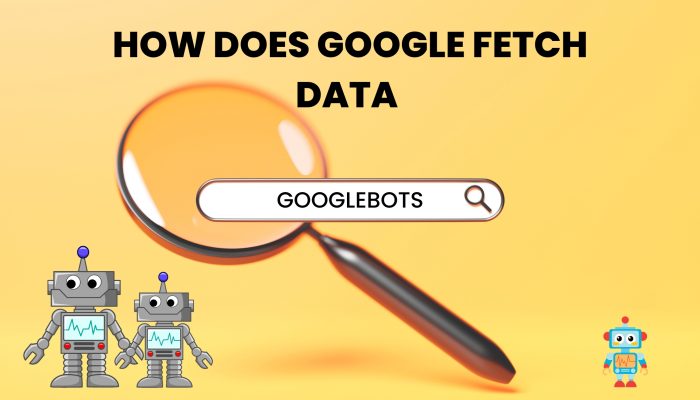Google’s data fetch is when a person enters a search query on Google, the search engine employs a complex process to provide relevant and accurate results. Here’s a simplified explanation of how Google works to deliver search results. Googlebot is the web crawling bot used by Google to discover and update pages on the internet for the search index. In simpler terms, it’s a program or automated script that systematically browses the web by following links from one page to another. The primary purpose of Googlebot is to gather information about web pages so that Google can index them and include them in its search results. Here’s a general overview of how the process works:

1. Crawling:
Google uses automated programs called “crawlers” or “spiders” to browse the web and discover new or updated content. The primary crawler is called Googlebot. It starts with a set of web pages known as the “seed set” and follows links from those pages to discover new URLs. This continuous process keeps Google’s index up-to-date.
2. Indexing:
After crawling a page, Googlebot processes its content and stores relevant information in Google’s index. The index is essentially a massive database that contains information about the content, structure, and relevance of web pages.
Did you know? Google’s Caffeine update in 2010 introduced a new indexing system, enabling faster and more frequent updates to the search index for more current results.
3. Query Understanding:
When a user enters a search query, Google’s algorithms analyze the query to understand the user’s intent. This involves considering factors such as the meaning of the words, the context of the search, and the user’s location.
4. Ranking:
Google uses a complex algorithm to rank the indexed pages based on their relevance to the user’s query. The ranking algorithm takes into account various factors, including the content’s quality, relevance, freshness, and the authority of the website.
5. Search Results Page:
The highest-ranked pages are displayed on the Search Engine Results Page (SERP). Google typically shows a mix of organic results (unpaid) and paid advertisements. The order of the results is determined by the ranking algorithm, with the most relevant results appearing at the top.
6. User Interaction:
Google continuously monitors user interactions with search results. Click-through rates, time spent on a page, and other engagement metrics help refine the ranking algorithm over time. If users consistently find a particular result helpful, it may be given higher priority in future searches.
It’s important to note that Google’s algorithms are sophisticated and consider hundreds of factors to provide the most relevant and useful results. Factors such as website quality, relevance to the query, user experience, and the authority of the content all play a role in determining the ranking of search results.
Googlebot’s crawl is not just about quantity; it’s about quality. The importance and authority of a page influence how often it’s crawled and how prominently it appears in search results.
Uncover more : XML Sitemaps .
Dig deeper : What is Googlebot and how does it work.
In summary, when a person searches on Google, the search engine fetches relevant information from its index, ranks it based on various factors, and presents the results in a way that is designed to best match the user’s query and intent.







